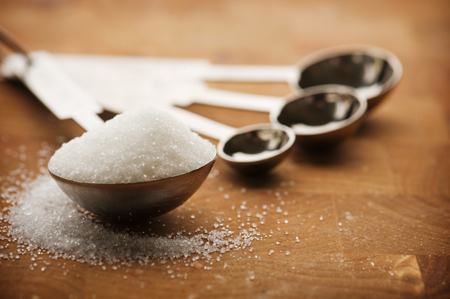 (Agrimoney) – The Brazilian currency reached an all-time low against the dollar on Tuesday, raising the prospect of increased supply from one of the world’s key agricultural exporters.
(Agrimoney) – The Brazilian currency reached an all-time low against the dollar on Tuesday, raising the prospect of increased supply from one of the world’s key agricultural exporters.
The real touched R$4.0670 to the dollar, 1.9% down on the day.
This is the lowest level the Brazilian currency has reached since it was introduced in 1994, and the first time that the currency has fallen below the depths reached in 2002, when markets panicked ahead of the election of leftist president Lula da Silva.
Ratings downgrade
Brazil’s currency has been buffeted by a weak economy, intractable public spending, and a lack of political wherewithal to resolve the crisis.
And an already grim situation was dealt another blow recently as disappointing economic information made its way out of China, which is Brazil’s main trading partner.
Standard & Poor’s cut has Brazil’s credit rating from “investment” to “junk” this month, and other ratings agencies are expected to follow suit.
Political deadlock
President Dilma Rousseff’s drive to reduce public spending has met with opposition from the legislature, including members of her own party.
Legislators are currently voting to overrule the president’s veto, for a bill that would increase pay for judiciary employees, the latest in a series of setbacks for Ms Rousseff’s cost cutting measure.
Ms Rousseff is expected to propose a new cabinet this week that will share power more evenly with her centrist coalition partners, in a bid to regain control of her legislature.
And in the background a rumbling corruption scandal at Brazils giant state owned oil company Petrobras, which has led to calls for Ms Rousseff’s impeachment, threatens to worsen the situation.
No rates hike
Developing world currency markets were given a stay of execution last week, when the US Federal Reserve maintained its current low interest rates.
Lower US interest rates should keep the dollar weaker, and support other currency markets.
But the news did little to slow the decline of the real, and with a hike in US interest rates expected this year.
The dollar was trading up 0.4% against a basket of world currencies as commodity markets closed, a two-week high, and well above the levels seen prior to the US interest rate announcement, indicating how little relief the delay has given markets.
Currency pressure
The weakness of the Brazilian real is bearish for a range of commodity prices.
Brazil is the world’s largest exporter of sugar and coffee, and a major corn and soybean grower.
A weaker real means that farmers will accept lower dollar-denominated prices, and encourage exports.
The currency effect pushed arabica coffee prices to a 1-1/2 year low.
December arabica futures settled down 1.5%, at 115.45 cents a pound, after reaching contract lows of 115.05 cents a pound.
November robusta coffee settled down 1.4%, at $1,511 a tonne, after falling to 2-year lows.
Withered canes
But sugar saw smaller losses, as news from India turned bullish.
Reuter’s reports that on a visit to top growing state Maharashtra, drought-withered sugar canes were being fed to cattle, as a weak monsoon hits the crop.
And Jack Scoville, of Price Futures said of Indian prospects that “trade sources expect that production could fall by 5% at this time from initial expectations”.
October raw sugar settled down 0.5%, at 10.88 cents a pound.
Ivorian dryness
And cocoa was lifted by growing concerns over dryness in Ivory Coast.
A number of analysts have forecast a 100,000-tonne drop in production in the world’s top grower in the next season, which starts next week.
December London cocoa finished up 0.9%, at £2,235 pounds a tonne, after touching four-year highs earlier in the session.
But a stronger dollar trimmed gains in New York, where December cocoa went sideways to settle at $3,312 a tonne.
Increased plantings
Soybean investors also had their eyes on Brazil, where the low real has boosted the profitability of soybeans, encouraging heavy sowings.
Michael Cordonnier told Agrimoney.com that he has forecast a 3.3% increase in plantings form last year, to 33.0m hectares, and said given the weak real that might be “on the low side”.
Some forecasts call for an increase in sowings of 5%.
And US data also dealt a blow to soybean prices, after a Department of Agriculture crop survey surprise markets by raising the condition of the soybean crop by two percentage points to 63% good or excellent.
The US soybean crop is now 7% complete, in line with last year’s progress.
November Chicago soybean futures ended up down 1.4% at $8.61 ¾ a bushel.
Harvest pressure
The USDA data showed corn harvesting now 10% complete, compared to 7% last year, with conditions rated 68% good or excellent, in line with last week’s levels, where some had expected a 1 percentage point cut in ratings.
The speed of the corn harvest is putting pressure on prices.
“We are in the middle of corn harvest and extra demand is lacking,” said CHS Hedging. ]
December corn finished down 1.2% at $3.80 ½ a bushel.
Slow planting
But the progress of winter wheat planting has been slow.
US winter wheat planting is 19% complete, compared to 23% last year and a 5-year average of 20%.
“Dryness in parts of the Russia and the US winter wheat areas has provided some support in wheat,” noted Darrell Holaday of Country Futures.
Chicago wheat futures ended up down 0.4% at $4.95 ½ a bushel.




